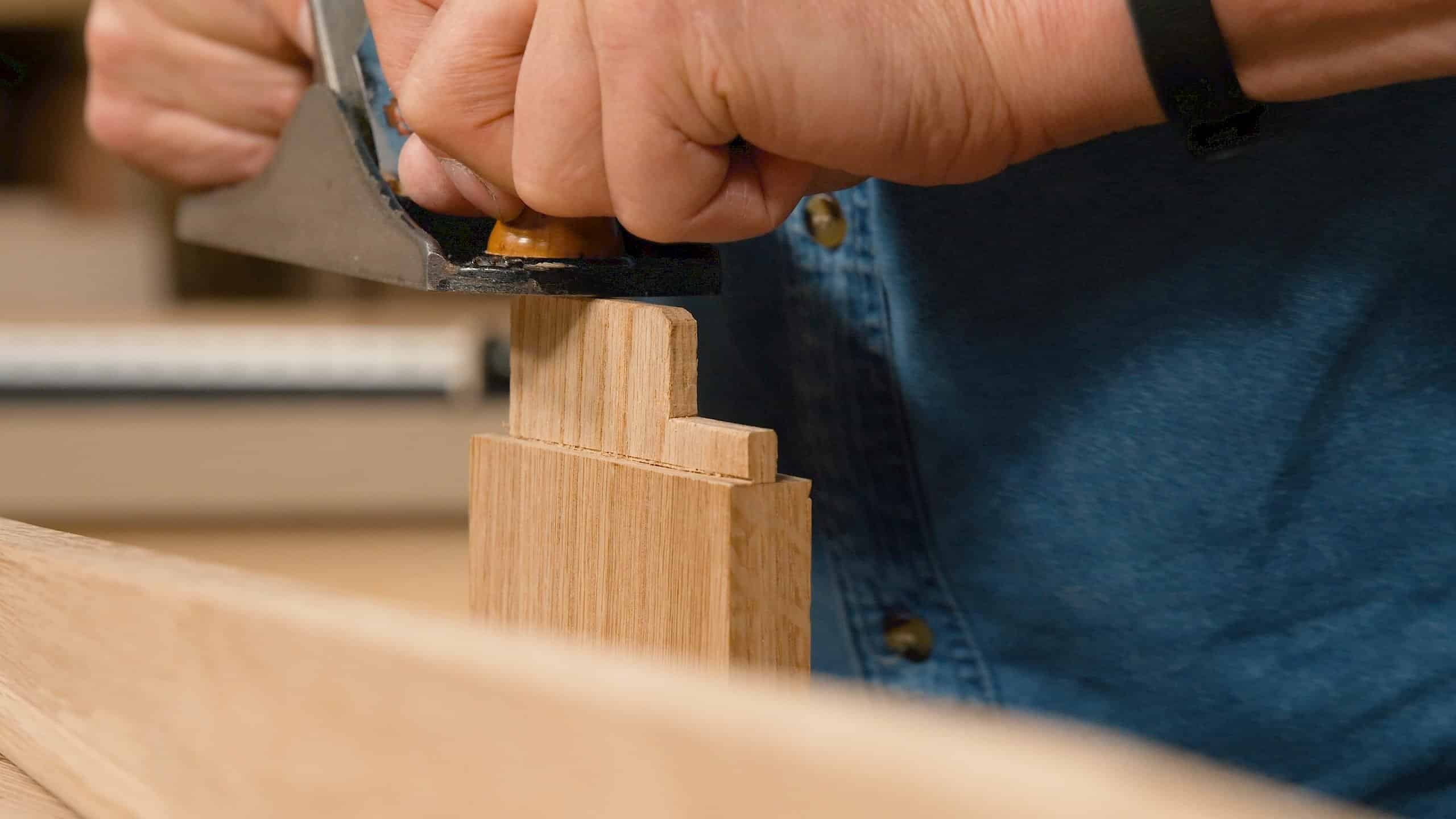Console Table: Episode 4
Posted 17 July 2019
This is an episode in a paid series. Want to watch it? You just need to sign up as a paid member, and you can enjoy this video and many other videos we think you will love.
In this episode Paul cleans up the front apron, lays out and cuts the tenon. Every tenon is different, but given that this is the main structural joint in this project, Paul takes his time to carefully cut and fit the joint. There is quite a bit to think about in terms of making sure the joint lines up, has tight shoulders and fits into the mortise. Paul is here to guide you through each step.


Excellent. Just my “speed”.
Dear Paul!
Watching yours series I noticed that you are always using Router plane and chisel for trimming shoulders. Is there any reason why you are not using Shoulder and Bullnose plane more often?
This is only my curiosity. Thank you for beautiful video.
Sven
Similar to this, I was going to ask about a file.
I suspect that you could use either of those planes to refine the surface of a tenon if they were sharp and you are so inclined.
However, being planes sometimes, they tend not to be reliable cutting across the grain, plus with a narrow tenon there is not much wood to register the bed on. In short it may give a tenon face that is not level or flat.
A chisel used on selected surfaces can remove odd tight spots but requires a bit of skill to use accurately.
A router plane is ideal for defining the surface level of the tenon because its base is referenced on the same plane or the same level, as the face-side of the board which is the first point of reference for all the cuts that are being made.
Alternatively, there is an old-fashioned tool, quite rare nowadays, that Paul never mentions that is very good for flatting surfaces…. but is an absolute pig to sharpen! That is a Float.
Here’s a link to a firm that still makes them:
https://www.hand-stitched-rasp-riffler.com/en/20-planemakers-floats
Imagine Rip saw teeth, about 1 mm wide…. then stretch it to about 25 mm or 1 inch, sharpen the whole thing the same way with a file and then ensure that each tooth is exactly the same height. Hard to do, but worth it. A sharp float can get into inaccessible spaces, as well as giving an excellent flat finish if needed both with and across the grain.
Hope this helps, but in the end its what works and what you’re comfortable with.
Hi,
thank you for your answer and for introducing “float”, I have never heard of it. Interesting tool.
Kind Regards,
Sven
That is a very interesting, I have seen these used on making moulding plane throats but did not know they were still available, thank you
Best John
Thank you for mentionning the floats. It is indeed an old-fashionned tool, but I believe quite under-rated or more likely, unfairly unknown nowadays. This is why I have decided a couple of years ago to restart their production.
Since then, I have improved the shape of the teeths in order to get the resharpening operation much easier when needed. A standard triangular saw-file should be enough to do the job now !
Hi Sven,
Paul says:
Using the knifewall and the chisel eliminates the need for what is a very expensive tool, the shoulder plane, and generally (in my view) an unnecessary tool. In times past, historically, the shoulder plane was used primarily for the wide shoulders of wide rails, ie the bottom rails of bank doors in wood. Today it’s very rare to see wooden doors anywhere as plastic and aluminium have replaced them. We shouldn’t think that shoulder planes have high functionality on shoulders that are on narrow rails, they are difficult to align.
Kind Regards,
Izzy
Hi Izzy,
thank you, very clear.
Kind Regards,
Sven
Paul I have noticed that router planes do not automatically lower and raise according to the setting you think you put on it. The collar gets stuck and does not allow the cutter to adjust correctly without wiggling the collar first. That settles the blade in place and then you can tighten the set screw.
Once again thank you for giving of your time and knowledge so we can become better hand wood workers. I never thought I would do so much manual woodwork in my life or end up with so many hand tools! I love it!
may be a dumb question, but why is it necessary to step the tenon and make the “haunch”? Why cant you just make it the same width and length? Same with the mortise. What is the reason for the haunch?
Bruan,
This question comes up pretty frequently, so:
https://woodworkingmasterclasses.com/discussions/topic/when-to-make-a-haunch-on-mortise-and-tenon-joints/
Hopefully the link works!
Best
Craig
Bryan, sorry small keys, fat fingers
Thanks Craig!
Hi Bryan,
Paul says:
The reason for the haunch is so that the tenon is enclosed on all 4 sides and having the shoulder continuous through is much easier to make.
Kind Regards,
Izzy
Thanks Izzy!
Hello everybody,
Can anyone explain to me why the tenons are non symmetric? 5/16 one side 3/16 on the other. I just cannot see the reason?
Thanks
I asked Paul and his reply is below:
Sometimes on the outside side of the leg the thickness of the wall of the mortice might be varied to keep more wood in that location rather than a thinner amount.
Thank you!